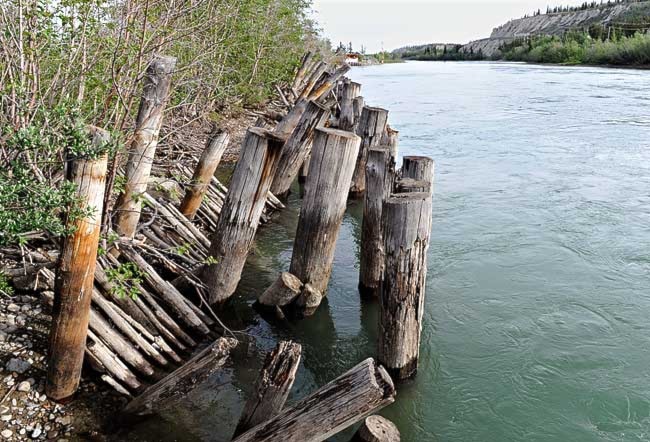The Whitehorse waterfront project has been drydocked for another year.
Construction of the wharf, expected to begin last year, won’t happen until 2011 even though federal funding was secured back in 2006.
The government has long touted the importance of the wharf project for drawing tourists downtown and highlighting the historical importance of the Yukon River.
Yet little more than roads and parking lots have been built as part of the waterfront project so far.
The delays are frustrating, said Whitehorse Chamber of Commerce president Rick Karp.
“That’s a loss of two years or three before tourism can really capitalize,” said Karp.
“We lose people being able to walk downtown and go onto the riverfront and look at history.”
The government has been toying with the idea of building a wharf since the mid-80s when it purchased riverfront stretching from Rotary Park to Strickland Street.
In 1986, the government had already completed a preliminary study for a Yukon River wharf. Later, the city was tasked with creating plans for the waterfront area.
Those plans eventually landed the territory $11 million worth of Canadian Strategic Infrastructure Funding for the project in 2006.
But since then plans have continually shifted.
Initially the territory looked at building an arts and cultural village along the waterfront to complement the wharf. Those plans were scrapped after concerns were raised that the buildings would block the view of the river.
Then the focus shifted to the wharf, with plans to turn the surrounding area into a historical centrepiece of downtown.
A sketch of the proposed waterfront development from 2009 shows a wharf and floating dock. It also features a historical interpretation centre, an activity and animation hub, extensive shoreline protection, a parking lot and a beach and boat launch area near Kanoe People.
Now most of those plans have been sheared away. The wharf, a parking lot and minimal shoreline protection are the only visible things left of those plans in a 2010 sketch.
Gone too are the groynes on Elliot Street and Jarvis Street to prevent erosion as well as infrastructure to shore up the stretch of riverbank in between.
That’s even though erosion and damage to salmon habitat were highlighted as significant concerns by the Yukon Environmental and Socio-Economic Assessment Board in its study of the project last year.
Three public sculptures planned for the corners of Main, Steele and Wood streets have also disappeared from the most recent plans.
Critical things are being cut from the plans, said Karp, adding the floating dock and riverfront landscaping were key components of the project.
He doesn’t understand why the government is still considering a $110,000 facelift of the Old Fire Hall when other plans have been scrapped, he said.
“Why would you spend $110,000 for a steeple for the fire hall that’s not even, I’ve heard, historically accurate and then take away $110,000 for landscaping on the waterfront which would have so much more mileage?” said Karp.
None of the plans have been ruled out, said Marc Perreault, acting director of Community Services infrastructure.
The government will build “whatever is possible to do in the existing budget,” he said. “Nothing’s been cut.”
The wharf project is being worked on in a phased approach and design plans for the wharf will be completed this summer, he added.
“It’s not scaled back in any way. What it is is fiscally responsible.”
The government has until the end of 2012 before federal funding for the project expires, but Perreault expects the wharf project to be completely finished by the fall of 2011, he said.
The city, for its part, has carried out its portion of the larger waterfront development plans. That includes rebuilding First Avenue in 2008, installing lighting along the Robert Service Bridge and in Rotary Park in 2006, and work underway on a heritage building in Shipyards Park and a parking lot in Rotary Park, both of which are expected to be completed this summer.
Additional plans along the waterfront include the Kwanlin Dun Cultural Centre near Shipyards Park, which has already begun construction.
Delays to the wharf project only mean that it will cost more down the road, said Karp.
“I understand that the construction costs have come in way over budget,” said Karp.
“If it were done in 2009, it probably wouldn’t be way over budget. Now there’s another year delay and it’ll be even more expensive.”
—With files from John Thompson.
Contact Vivian Belik at
vivianb@yukon-news.com
